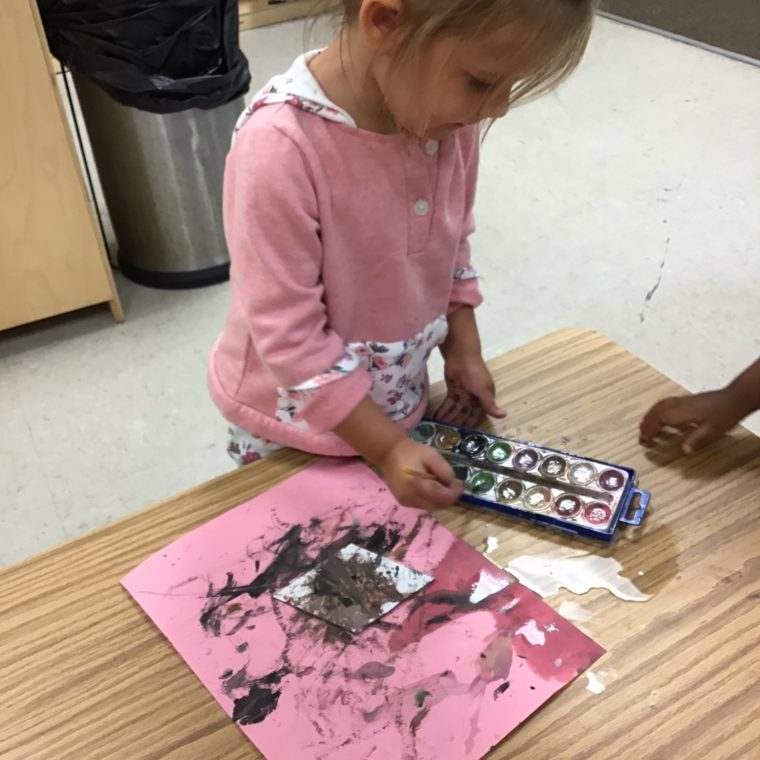In our Early Education Centers, we believe children learn through play.
The classrooms are set up in areas to allow children to explore and learn as they interact with the materials around the room. In the art area, children have opportunities to investigate many new materials and use them in ways they decide. This is called process art.
What is process art?
Process art is when a child is given an open-ended project and the opportunity to express themselves through their work. With process art, it is all about the discovery. This allows your child to focus on being creative and learn to have the confidence to explore and experiment.
What is product art?
Product art is when a child begins a project knowing what the end product should look like and they follow a set of instructions to get to their goal. There is a right and wrong way to work on the project and typically requires a specific skill and technique to reach that end goal.
Here are some ways we are helping to help develop children’s creativity (and some ways you can support your child’s interest in exploring):
- Provide a rich assortment of materials and experiences.
- Follow the child’s lead. Children generally learn from experiences that are an interest of their own.
- Expand on the child’s ideas whenever possible by explaining other uses for the materials that are provided and asking open-ended questions (questions that require more than one-or-two-word answers).
- Notice the child’s work. “You used a lot of red and blue in your painting.’ Or “There are lots of circles and rectangles on your paper.”
- Encourage conversation by asking open ended questions or prompts like, “Tell me about your picture.”
There will be times when children will have opportunities to create product art, particularly at times of celebrations, such as creating a gift for a holiday. However, most art activities will be process art to allow children the opportunity to:
- Relax, focus, feel successful, and express their feelings
- Choose to discuss their art and add print to it (on their own or dictated to a teacher)
- Compare, predict, plan and problem-solve
- Use small motor skills to paint, write, glue, use clay and make collages
Teachers may take pictures of your child exploring with the art materials and share this with you in Tadpoles or print it out and give it to you at the end of the day, to show you what they explored, rather than what they “made” or a “product”.
Your child’s self-confidence, self-worth and independence will grow as his/her skills improve!




